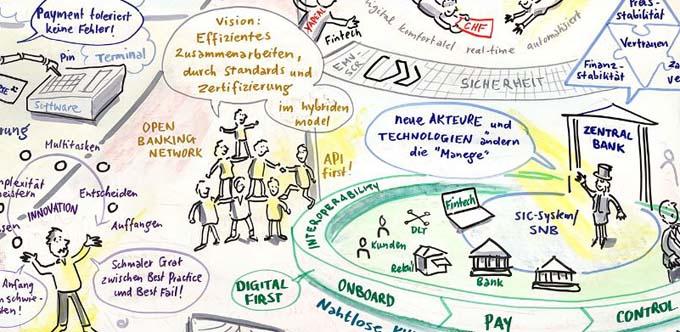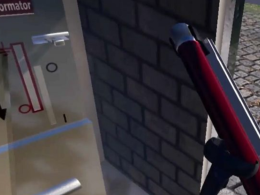The down-to-earth cooperative bankers and the fancy Metaverse? At first glance, that doesn't go together. Nevertheless, Raiffeisen is now commenting on the potential of virtual real estate. The Swiss Payment Forum is also discussing the fact that the metaverse will influence the financial industry in the future.
Gartner predicts that as early as 2026, 25% of all people will spend at least one hour per day in the metaverse. No wonder, in their current Real estate studyNow the bank that dominates the traditional Swiss mortgage market is also buying into the promises of "virtual real estate". But it quickly becomes clear that the Raiffeisen bankers do not really trust these virtual worlds.
Trading in non-fungible tokens (NFTs) on the blockchain has taken on strange forms in recent months, they find. "In addition to digital works of art, original image and video recordings or objects in video games, you can now also buy properties in the digital world, the so-called metaverse. And this partly at exorbitant prices."
Indeed. Anyone who got hold of a plot of land in the game world The Sandbox in January 2021 for the average price of 150 dollars could enjoy an increase in value of almost 11,000 percent by the following October of the same year.
The location determines the price
In view of the flattening price trend on the Swiss real estate market, this should actually sound promising in the eyes of Hypo bankers. Especially since some of the laws of dealing with real estate apply in the metaverse just as they do around Lake Zurich: "Location, location, location" is also the magic word for real estate buyers in cyberspace, as it turns out. "As with hard real estate, it is above all the location that determines the price," note the Raiffeisen experts.
The relative attractiveness of different plots of land in a metaverse is very much defined by the number of users in the immediate vicinity. In other words, the more players there are on average in the vicinity of one's own plot, the more revenue can theoretically be generated with the plot, which in turn justifies a higher price.
However, the study continues, there are also major differences to the traditional real estate market. "While in the real world land is basically a scarce, limited commodity, in the metaverse new land can be created at the click of a mouse. For example, in the game world in which one is invested, or through the creation of ever new, competing metaverse projects.Another difference could be added: While there have been warnings of price bubbles on the Swiss real estate market for years, and none have ever burst, plot prices in virtual space have fallen over a cliff since last autumn, following the broad crash of crypto investments. In The Sandbox, for example, prices had fallen back below $2,500 by the end of last June.
The playing field of risk-taking speculators
For the bank economists, one thing is certain: the mostly still very young metaverse projects are today obviously primarily the playground of risk-loving speculators. Real estate investments are highly risky from both a short-term and a longer-term perspective, and total losses on the invested capital are not unlikely.
Swiss Payment Forum
Whether the development will be so positive also depends on whether payment processes run smoothly there, access to payment solutions in the metaverse is possible seamlessly and perhaps even traditional means of payment can be accepted. This is an exciting topic for the payment industry, which will also be addressed at the Swiss Payment Forum in Zurich on 21 and 22 November.
Current payment topics such as instant payment, DeFi, SWIFT and crypto transactions, Secure Swiss Finance Network and the development of the Metaverse will be discussed here. A very special highlight is the keynote by futurologist Lars Thomsen. In his presentation, he will talk about the seven most important megatrends of the coming decade and about incremental and disruptive innovations.
Source: finews / organiser









